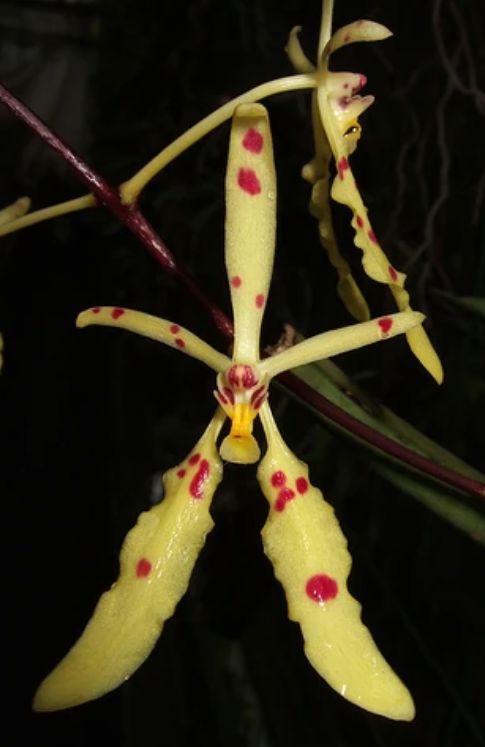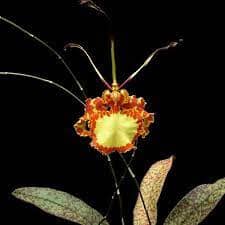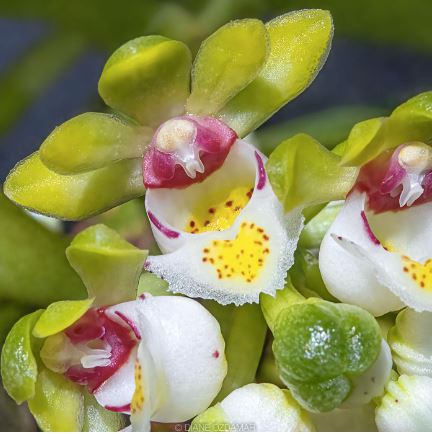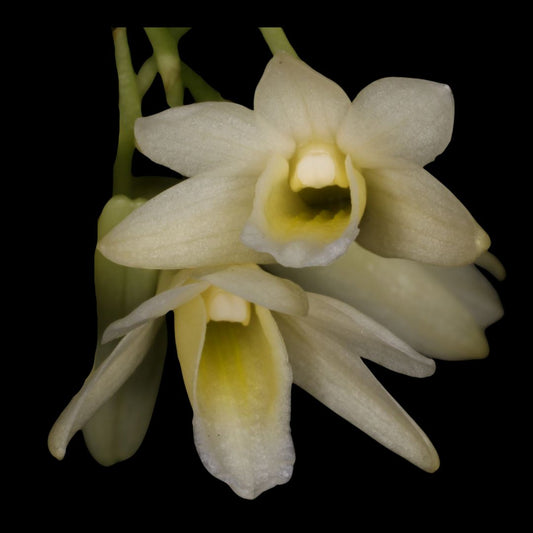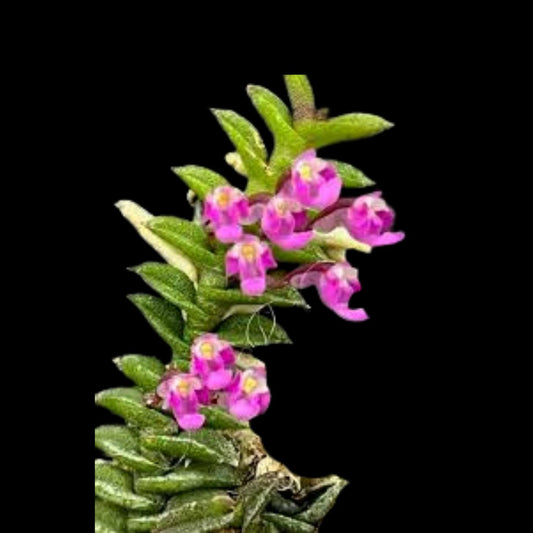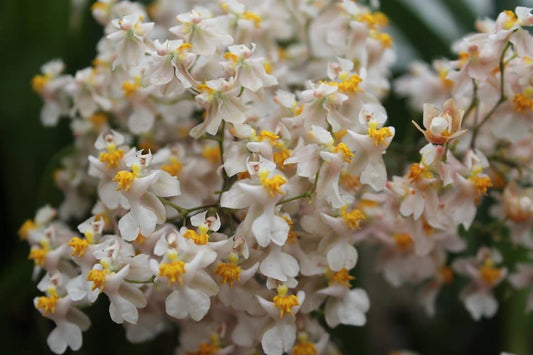La Foresta Orchids
Renanthera citrina
Renanthera citrina
Couldn't load pickup availability
Renanthera citrina – The Lemon Yellow Renanthera
An Exquisite Orchid from the Limestone Peaks of Vietnam
Renanthera citrina, known affectionately as the Lemon Yellow Renanthera, is a rare jewel native to the misty mountaintops of northeastern Vietnam. Found near Tra Linh in Cao Bang Province and Ha Giang, this small, warm- to cool-growing epiphytic orchid occasionally graces mossy limestone bluffs, thriving in dry, open primeval forests at elevations between 650 and 900 meters. Though rare overall, lucky explorers may still find bright clusters of these plants clinging to ridgelines where mist and sunlight dance across the forest canopy.
This charming species grows with a short, woody stem about 20 cm long, lined with narrow, lanceolate, rigid leaves. Each leathery, gracefully curved leaf measures about 9–14 cm in length, giving the plant an elegant, sculptural form even out of bloom.
In winter, Renanthera citrina puts on a dazzling display: slender, arching inflorescences up to 45 cm long burst forth, carrying up to 25 star-shaped, bright lemon-yellow flowers at once. Each blossom is lightly dusted with 1–3 purple-violet spots, creating a playful and delicate contrast. The flowers, with their flowing sepals, upward-reaching petals, and three-lobed spurred lip, evoke a dynamic sense of movement — like little suns scattered across the plant.
Cultivation Tips for Renanthera citrina
Light:
Provide bright, filtered light — around 40,000–50,000 lux. This species thrives under very bright conditions, just shy of direct midday sun, which can scorch the leaves. Strong air movement is essential to prevent overheating and maintain plant health.
Temperature:
Renanthera citrina enjoys a warm summer and a cooler winter rest. Ideal summer temperatures are around 29°C during the day and 21°C at night. In winter, allow for a cooler drop to 15–18°C during the day and 6–9°C at night to promote healthy growth cycles.
Humidity:
High humidity (80–85%) is crucial for most of the year, dropping slightly to 75% during the brief winter dormancy. In dry periods, increase misting and maintain good air circulation.
Potting and Media:
Grow this orchid mounted on cork or hardwood for the best air flow, or in shallow baskets or pots filled with a fast-drying, airy mix. A blend of medium-grade fir bark, tree fern fiber, coarse perlite, and a pinch of chopped sphagnum moss works beautifully. Adding charcoal helps keep the mix fresh and prevents souring. Repot immediately when the media shows signs of breakdown, ideally at the onset of new root growth.
Watering:
Keep the plant evenly moist during the growing season (late spring to autumn), ensuring that the roots dry slightly between waterings but never remain soggy. In winter, reduce watering carefully to match the cooler temperatures and slower growth.
Fertilizing:
Feed lightly once a week during active growth with ¼–½ strength orchid fertilizer. Use a nitrogen-rich formula in spring and early summer, switching to a phosphorus-rich blend as summer fades into fall to support blooming and prepare the plant for dormancy.
Rest Period:
In winter, Renanthera citrina requires a distinct resting period. Allow the plant to dry more between waterings without letting it remain bone dry for long stretches. Early morning misting can help maintain hydration without encouraging rot. Suspend fertilization until new growths emerge in spring.
This is a blooming size barerooted division orchid, about 1 to 2 years to bloom, grown from seed, limited!
**Mechanical damages in some leaves due to transport**
Why Add Renanthera citrina to Your Collection?
Renanthera citrina is a rare and breathtaking orchid that offers both beauty and uniqueness. Its brilliant lemon-yellow flowers with delicate violet spotting bring a burst of sunshine to your collection during the cooler months when few others are in bloom. With its elegant form, striking winter display, and fascinating origin from the limestone forests of Vietnam, this orchid is a true collector’s gem — perfect for growers who appreciate rare species and the rewarding challenge of cultivating something truly extraordinary.


